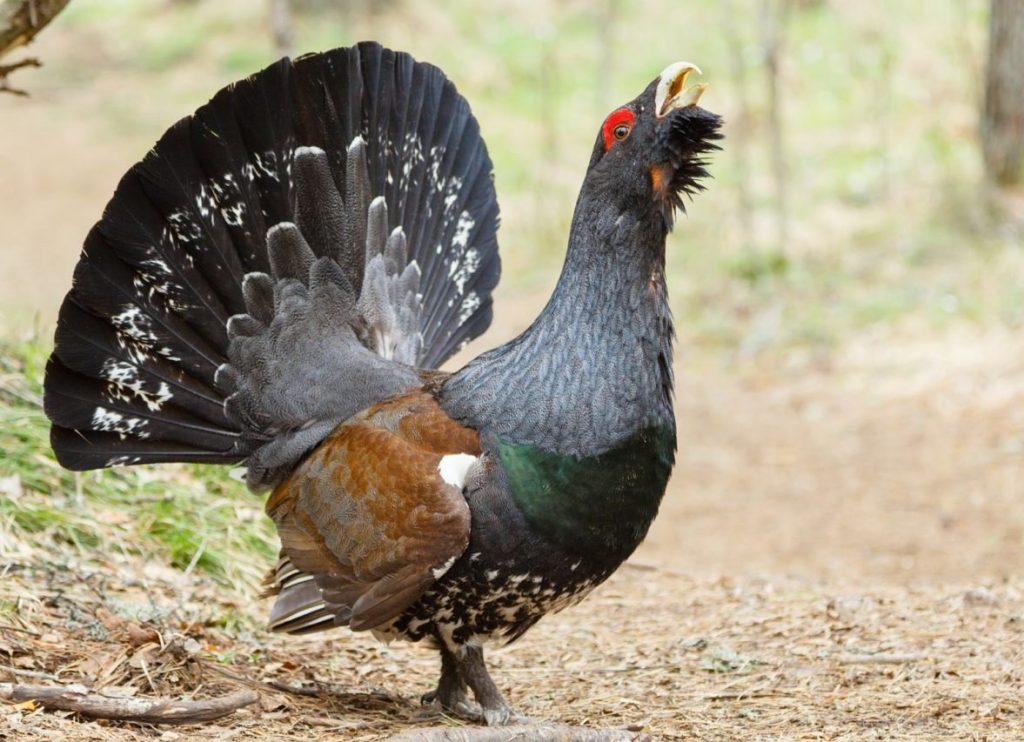Both male and female Capercaillie birds have a white spot on the wing bow. They have feathered legs, especially in the cold season for protection against cold. Their toe rows of small, elongated horn tacks provide a snowshoe effect that led to the German family name ‘Rauhfusshühner’, literally translated as ‘raw feet chickens’.
These so called ‘courting tacks’ make a clear track in the snow in winter. Both male and female Capercaillie birds can also be distinguished very easily by the size of their footprints. There is a bright red spot of naked skin above each eye. In German hunters’ language, these are the so-called ‘roses’.

The Capercaillie is a herbivore and lives on a variety of foods including buds, leaves, berries, insects, grasses and in the winter mostly conifer needles. You can see the food remains in their droppings, which are about 1 centimetre in diameter and 5 – 6 centimetres in length. Most of the year the droppings are of solid consistency, but with the ripening of blueberries, these dominate the diet and the faeces become formless and bluish-black.















